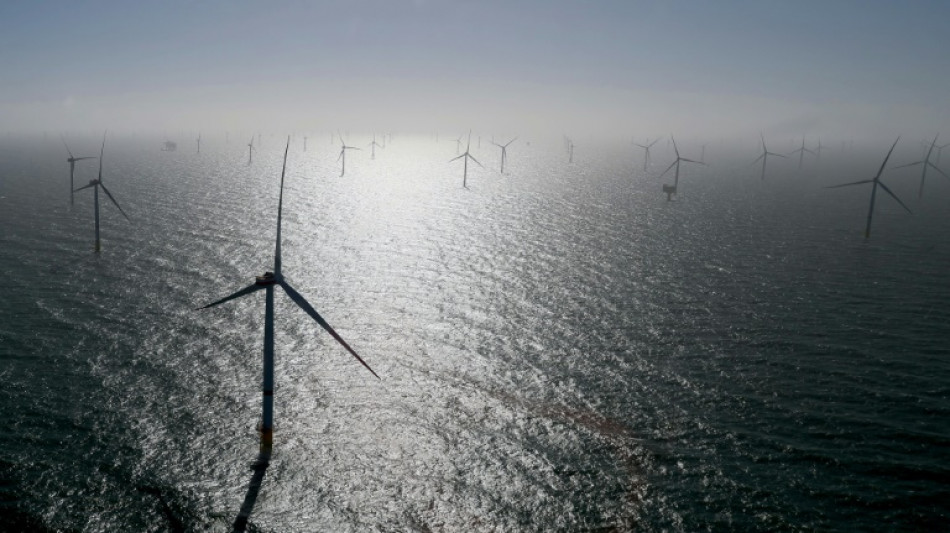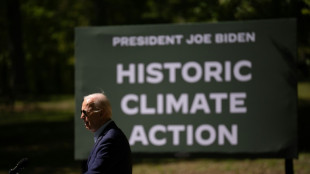
-
 El Salvador Congress votes to end ban on metal mining
El Salvador Congress votes to end ban on metal mining
-
Five things to know about Panama Canal, in Trump's sights

-
 NBA fines Minnesota guard Edwards $75,000 for outburst
NBA fines Minnesota guard Edwards $75,000 for outburst
-
Haitians massacred for practicing voodoo were abducted, hacked to death: UN

-
 Inter beat Como to keep in touch with leaders Atalanta
Inter beat Como to keep in touch with leaders Atalanta
-
Man Utd boss Amorim questions 'choices' of Rashford's entourage

-
 Trump's TikTok love raises stakes in battle over app's fate
Trump's TikTok love raises stakes in battle over app's fate
-
Is he serious? Trump stirs unease with Panama, Greenland ploys

-
 England captain Stokes to miss three months with torn hamstring
England captain Stokes to miss three months with torn hamstring
-
Support grows for Blake Lively over smear campaign claim

-
 Canada records 50,000 opioid overdose deaths since 2016
Canada records 50,000 opioid overdose deaths since 2016
-
Jordanian, Qatari envoys hold talks with Syria's new leader

-
 France's second woman premier makes surprise frontline return
France's second woman premier makes surprise frontline return
-
France's Macron announces fourth government of the year

-
 Netanyahu tells Israel parliament 'some progress' on Gaza hostage deal
Netanyahu tells Israel parliament 'some progress' on Gaza hostage deal
-
Guatemalan authorities recover minors taken by sect members

-
 Germany's far-right AfD holds march after Christmas market attack
Germany's far-right AfD holds march after Christmas market attack
-
Serie A basement club Monza fire coach Nesta

-
 Mozambique top court confirms ruling party disputed win
Mozambique top court confirms ruling party disputed win
-
Syrian medics say were coerced into false chemical attack testimony

-
 NASA solar probe to make its closest ever pass of Sun
NASA solar probe to make its closest ever pass of Sun
-
London toy 'shop' window where nothing is for sale

-
 Volkswagen boss hails cost-cutting deal but shares fall
Volkswagen boss hails cost-cutting deal but shares fall
-
Accused killer of US insurance CEO pleads not guilty to 'terrorist' murder

-
 Global stock markets mostly higher
Global stock markets mostly higher
-
Not for sale. Greenland shrugs off Trump's new push

-
 Acid complicates search after deadly Brazil bridge collapse
Acid complicates search after deadly Brazil bridge collapse
-
Norwegian Haugan dazzles in men's World Cup slalom win

-
 Arsenal's Saka out for 'many weeks' with hamstring injury
Arsenal's Saka out for 'many weeks' with hamstring injury
-
Mali singer Traore child custody case postponed

-
 France mourns Mayotte victims amid uncertainy over government
France mourns Mayotte victims amid uncertainy over government
-
UK economy stagnant in third quarter in fresh setback

-
 African players in Europe: Salah leads Golden Boot race after brace
African players in Europe: Salah leads Golden Boot race after brace
-
German far-right AfD to march in city hit by Christmas market attack

-
 Ireland centre Henshaw signs IRFU contract extension
Ireland centre Henshaw signs IRFU contract extension
-
Bangladesh launches $5bn graft probe into Hasina's family

-
 US probes China chip industry on 'anticompetitive' concerns
US probes China chip industry on 'anticompetitive' concerns
-
Biden commutes sentences for 37 of 40 federal death row inmates

-
 Clock ticks down on France government nomination
Clock ticks down on France government nomination
-
Mozambique on edge as judges rule on disputed election

-
 Mobile cinema brings Tunisians big screen experience
Mobile cinema brings Tunisians big screen experience
-
Honda and Nissan to launch merger talks

-
 Police arrest suspect who set woman on fire in New York subway
Police arrest suspect who set woman on fire in New York subway
-
China vows 'cooperation' over ship linked to severed Baltic Sea cables

-
 Australian tennis star Purcell provisionally suspended for doping
Australian tennis star Purcell provisionally suspended for doping
-
Luxury Western goods line Russian stores, three years into sanctions

-
 Wallace and Gromit return with comic warning about AI dystopia
Wallace and Gromit return with comic warning about AI dystopia
-
Philippine military says will acquire US Typhon missile system

-
 Afghan bread, the humble centrepiece of every meal
Afghan bread, the humble centrepiece of every meal
-
Honda and Nissan expected to begin merger talks


European countries aim to boost wind energy production
Nine European countries were holding a summit Monday aimed at scaling up wind power generation in the North Sea, spurred by the fallout of the Ukraine war and the push for renewables.
Hosted by Belgium in the coastal town of Ostend, the meeting will gather the leaders of EU members France, Germany, Ireland, Denmark, the Netherlands and Luxembourg, with European Commission chief Ursula von der Leyen also attending.
Norway and Britain will participate, too, though the UK's energy minister was leading his delegation and not Prime Minister Rishi Sunak, who stayed in London on another engagement.
"We need offshore wind turbines -- and we need a lot of them," the leaders of the countries, including French President Emmanuel Macron, German Chancellor Olaf Scholz and Sunak, said in a joint op-ed published in Politico.
"We need them to reach our climate goals, and to rid ourselves of Russian gas, ensuring a more secure and independent Europe."
The collective goal, they said, was to boost offshore wind power generation to 120 gigawatts by 2030 -- from just 30 GW now -- and at least 300 GW by 2050.
The North Sea summit is the second one to be held, after the four countries in the inaugural gathering last year -- Belgium, Denmark, Germany and the Netherlands -- decided it was necessary to broaden cooperation.
They recognised this was "a massive undertaking" requiring "huge investments in infrastructure".
Belgian Prime Minister Alexander De Croo said ahead of the summit that it would be focused on "speed of execution" and standardising equipment to build the offshore wind farms faster and cheaper.
Around 100 bosses of companies in the wind turbine supply chain were also participating in the summit.
The leaders' op-ed emphasised the need to source expertise and parts from Europe rather than elsewhere.
"We need to make space for European value chains when it comes to green tech and diversify our sources of critical raw materials for wind turbines, batteries and the like," they said.
China currently dominates the supply of critical components such as rare earths, and the United States is heavily subsidising industry to onshore that sector.
"We are bolstering our energy security and sending a strong signal to (President Vladimir) Putin's Russia that the days of his dominance over global power markets are well and truly over," British Energy Security Secretary Grant Shapps said as he headed to the summit.
Security of the offshore installations was also a topic of the summit, given recent reports of a Russian spy ship in the North Sea and the sabotage of Nord Stream gas pipelines in the Baltic Sea in September 2022. A NATO official was taking part to discuss the topic.
- Industry criticism -
WindEurope, the federation representing Europe's wind energy industry, believes the summit's ambitions are doable.
But it highlighted a lack of "adequate funding mechanisms" and recruitment in the sector.
Current policy, aimed at getting to a carbon-neutral future in Europe, "is overly focused on technological breakthroughs, rather than actual scaling up of existing supply chains", WindEurope said in a statement.
It also criticised "uncoordinated market interventions, price caps and national clawback measures" that "deterred investments".
The organisation says Europe needs to build the offshore infrastructure to add 20 GW in output per year, yet the sector currently has capacity for just seven GW annually, with supply chain bottlenecks for cables, substations and foundations, and in the availability of offshore wind vessels.
Investment to get Europe where it wants to be is massive: the EU has calculated the cost of getting to 300 GW in offshore energy production by 2050 at 800 billion euros ($900 billion).
Britain has the biggest fleet of offshore wind farms, 45 of them, currently producing 14 GW, with plans to expand capacity to 50 GW by 2030.
Germany's 30 wind farms produce eight GW, followed by the Netherlands with 2.8 GW and Denmark and Belgium both with 2.3 GW.
The other participating countries produce less than a gigawatt from their existing installations but share ambitions to greatly ramp up wind energy capacity.
The European Union recently set a goal to double the proportion of renewables in its energy mix, to 42.5 percent, notably by making it easier to get permits to install the infrastructure.
H.Silva--PC




